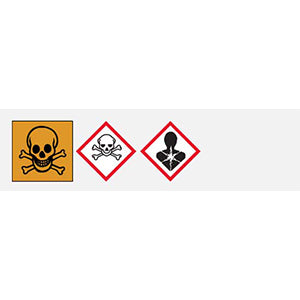Summary, we list dangerous chemicals to be aware of in cleaning products and offer environmentally friendly alternatives.
Last edited on May 8, 2024

We list the most dangerous chemicals to watch out for and provide tips on environmentally friendly replacement products.
Cleaning environmentally friendly is not only good for nature, the fish in the waterways and all other plant and animal life but also for you and your family. Being around harmful chemicals is not healthy and it can harm us quite directly.
Worth mentioning is that most things are chemical. Water for example: H2O, dihydrogen oxide, salt is chemical: sodium chloride – neither of these two are harmful. Sodium chloride doesn't sound so fun, but when you know that it means = salt, it is suddenly less dramatic. What is needed is therefore knowledge.
By learning a little more, you can easily distinguish harmful from harmless. We will never get away from the contact with harmful chemicals completely, we can for example not decide over which cleaning products are used in all the different premises we visit during a day BUT we can do our best by ensuring that we are not exposed to unnecessary and unhealthy things at home.
Here we will go through a few simple things that you can take hold of to make your everyday life less exposed to harmful chemicals.
Tip number 1 – Start reading lists of ingredients
Warning symbols on the back are the first warning sign. If the warning and list of ingredients are also long, you should be careful – continue reading and investigate or put it back on the store shelf.
Substances that are toxic or can cause serious, long-term damage are marked like this

Products that are hazardous to the environment are marked like this

Västerbottenssåpa does not need any of the above markings, Västerbottenssåpa is easily biodegradable and harms neither you nor the environment.
Chemicals to watch out for in cleaning products
Chlorine sodium hypochlorite – toxic chemical that damages aquatic creatures. As is known, wastewater eventually ends up in lakes and waterways.
Triclosan – can cause hormone problems, both in you as a user and when it is released into the ecosystem.
2-butoxyethanol – can give you respiratory problems, low blood pressure and it can even reduce the red blood cells in the blood.
Denatured ethanol – ethyl alcohol that causes nausea, dizziness, you can lose your sight and in the worst case die. This should preferably not be found within the walls of the home and if you have this at home it should be handled with extreme care and kept far from children.
Alkyl dimethyl benzyl = ammonium chloride, works in the same deadly way as denatured ethanol.
Substances you can use for cleaning instead:
Bicarbonate can be used for cleaning
Bicarbonate is alkaline – and can therefore be used for all cleaning where the dirt comes from plants, animals or humans.
A few tips:
Remove bad odors in shoes.
Clean a mattress / sofa / carpet
Mix with vinegar
and dissolve clogs in the drain
Acetic acid can be used for cleaning
Acetic acid is acidic – and can therefore be used for all cleaning where the dirt comes from metals, corrosion or where lime needs to be dissolved.
A few tips:
Clean the coffee maker that has become clogged with lime
Clean the strainer in the tap / shower head
Use as rinse
aid and polishing agent.
Do NOT use for anything that contains eggs or for wood floors.
Vinegar can be used for cleaning
Vinegar is acidic – and can therefore be used for all cleaning where the dirt comes from metals, corrosion or where
lime needs to be dissolved.
A few tips:
Remove tape residue
Catch fruit flies
Soap for all cleaning at home and work
Soap
is both alkaline and fatty – and can therefore be used for all cleaning where the dirt comes from plants, animals or
humans or where the dirt is greasy.
A few tips:
Pre-treat greasy stains on clothes before washing
Clean the cooker hood filter
Behind
the stove
In the bathroom
________________________________________________________________
Questions and Answers
- What is the first step to avoid harmful chemicals?
The first step is to start reading the list of
ingredients on cleaning products and pay attention to the warning signs, especially if the list of ingredients is long.
- What are some examples of dangerous chemicals that can be found in cleaning products?
Examples of
dangerous chemicals include chlorine, triclosan, 2-butoxyethanol, denatured ethanol and alkyl dimethyl benzyl.
- What are some environmentally friendly alternatives suggested for cleaning instead of dangerous
chemicals?
Environmentally friendly alternatives include
bicarbonate,
acetic acid, vinegar and
soap,
which can be used for different types of cleaning depending on the source of the dirt.
- What are some examples of uses for acetic acid in cleaning?
Examples of uses for
acetic acid include cleaning the coffee maker, removing limescale from faucets
and shower heads, and using as a rinse aid and polishing agent.
- What is the advantage of using soap for cleaning?
The advantage of using
soap
for cleaning is that it is both alkaline and fatty, which makes it effective for cleaning dirt that comes from plants,
animals or humans, as well as greasy dirt.
Visit our store Västerbottenssåpa.se
